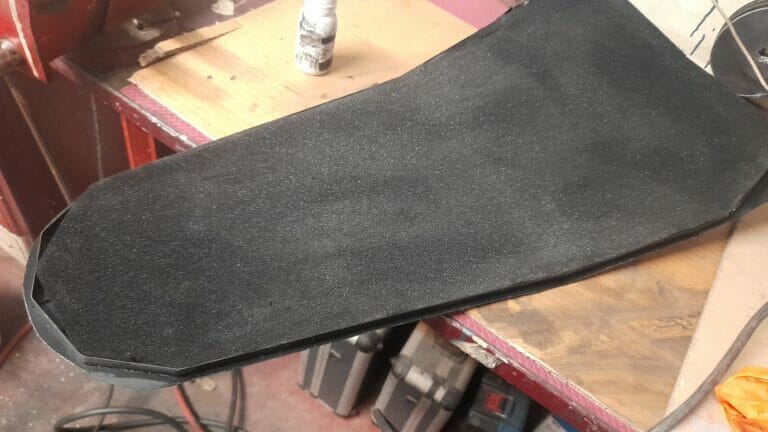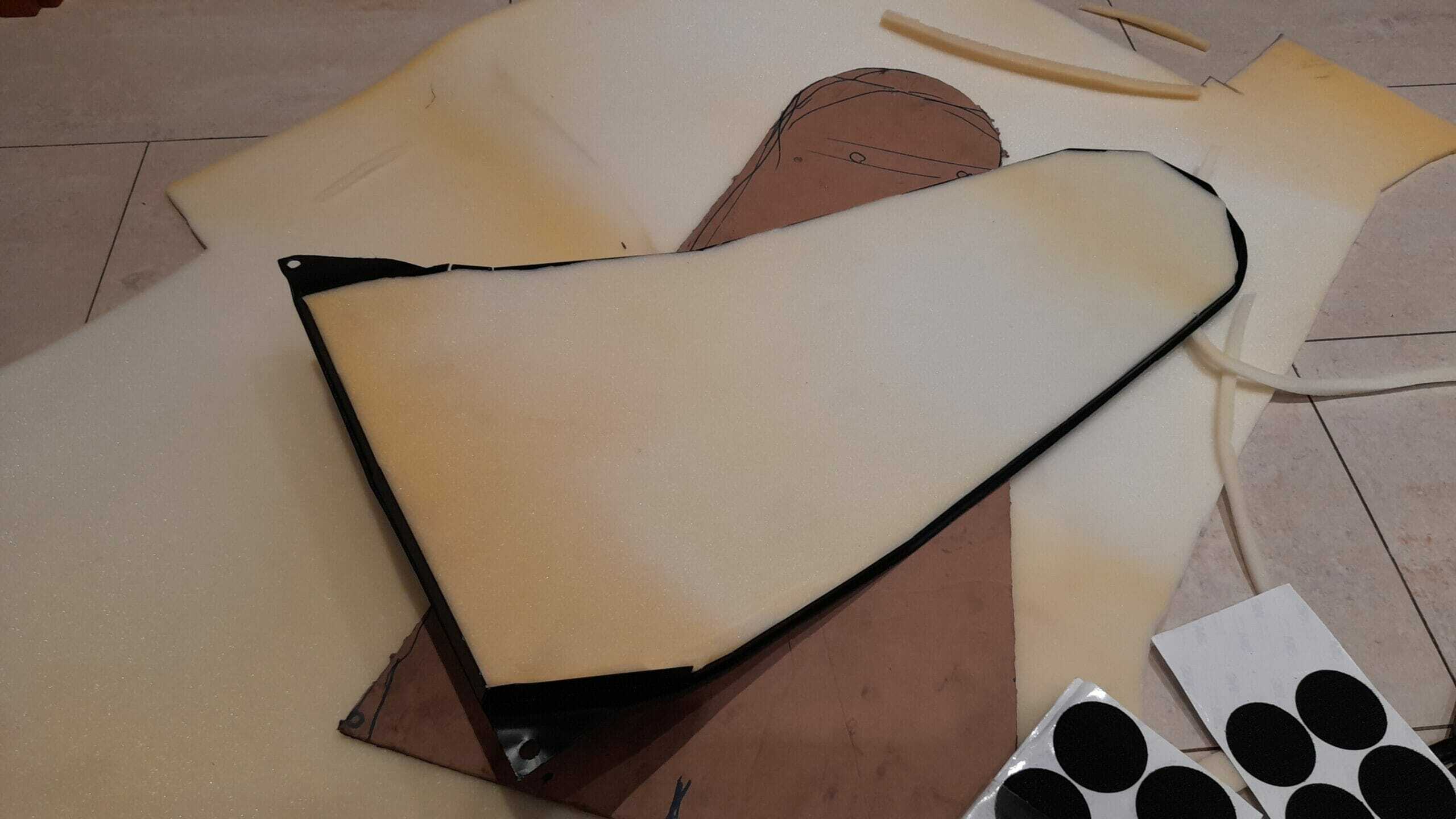Phase 7 - Oil collecting foam

As a previous step to the installation of the tray, we will add the foam. This will have the mission of retaining the fluid drops that may eventually drain from the areas adjacent to the plugs, joints, etc. Once again, we reiterate what we have already said in the following sections. I y II of this series of posts on oil leaks: If you have real oil leaks in what is understood as such, we suggest that you first look for the solution to the root problem for which these fairings are NOT such a solution.
In this assembly, foam rubber sheet has been used. It should be noted that it retains oil droplets that fall at a relatively low temperature. So you won’t have problems with the foam degrading or melting with temperature. In any case, if you want to be sure, you can always heat it beforehand with a hot air gun or boiling water, making a test with a sample. In our case, in one year of use we have never had any problems.
COLOR: In our case, the natural color of the foam was an ivory white. It is obvious that color does not impact functionality. But in the case of the Renault Dauphine, part of the inner face of this tray is visible when the rear engine hood is raised. And the whitish color of the foam is very visible. So for aesthetic reasons and integration with the environment, I preferred to dye it black. To dye it, you can use fabric dye, or simply
universal dye
of black paint. Directly or diluted with a little water, it works very well and does not alter the structure of the foam. If you want, use black foam directly and you won’t have to dye.
HOW TO FIX IT: We have used some adhesive velcro patches (I share with you a sample of example
HERE
). They hook well on both sides and allow you to remove the foam to replace it when it is dirty (as I also mentioned, I suggest that the one you remove, as it will contain oil, take it to a clean recycling point and do not mix it with household garbage).
Photo gallery phase 7
This is the image gallery of the preparation phase of the oil collecting foam. You can click on each of the photos to see the description. As always, if you have any questions or doubts, you can contact us and we will be happy to answer and help you.
How long will the foam last? Use of the tray to monitor oil leakage (or absence of oil leakage)
The duration of the foam will depend on the amount of oil that the area protected by the tray drains. But I can already tell you that it should last – in a reasonably clean situation, or with just a few drops or a small amount of oil – quite a long time.
In at least one year you should not notice that the foam becomes “saturated” with oil. That is, ideally, it should be only “reasonably stained” in one year. On the other hand, if after a year or a few months you see that it is soaked in oil, then I suggest again that you go to the root cause of the leakage problem.
In any case, the foam will serve you as a monitor of the amount of oil your car is losing, and you will also be able to qualify if you are talking about “drainage”, “sweating”, “seepage” or directly “leakage”, and you will have additional information to solve the problem.
Or, for example, if your classic car shows excessive oil consumption, you will be able to determine whether the oil is consumed as a loss through external leaks (it will appear in the pan) or internally through combustion.
In any case, the good thing will be that the little or a lot of oil you drop will not end up on the floor.

